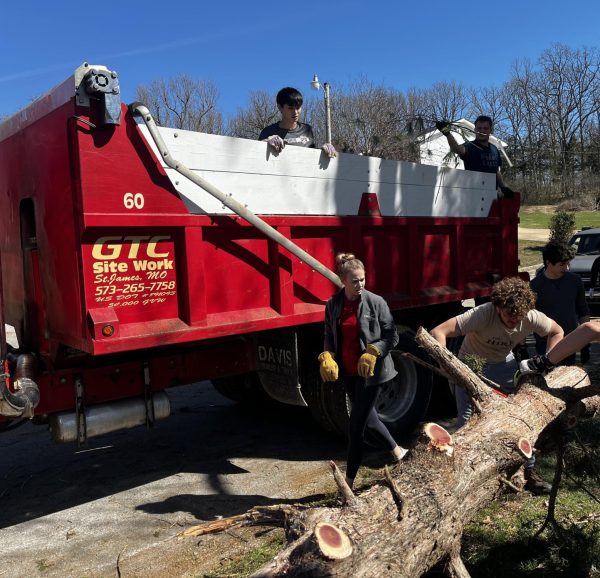Moonward Bound: A preview of the future of space
On July 21, 1969, thousands of people huddled around their TVs, watching what was previously believed to be impossible, and at 02:56 (Coordinated Universal Time) it was achieved: man’s first steps on the moon. It has been 50 years since that historical day when America reached the moon, and now the National Aeronautics and Space Administration hopes to go back. NASA has started the project Artemis, planning to go back to the moon to harvest resources and eventually make a trip to Mars. Before NASA can go through with the plan, they need as many countries as possible to sign off on the Artemis Accords, which defines the principles of extracting materials in deep space, grounded in the Outer Space Treaty of 1967.
The Artemis Accords was the public forum debate topic for April of this year. English teacher and Speech and Debate coach Patrick Brooks worked with several students on his team to create cases about whether or not India should sign off on the accords.
“The Artemis Accords are trying to get these countries to agree to certain terms and conditions about resource sharing and investments,” stated Brooks.
A main part of the Accords is to figure out rights of ownership to certain bodies in space, such as the moon.
“People are arguing a lot about the extent to which your private companies will be able to allocate resources and take back property rights. Let’s say Elon Musk figures out how to land some sort of mining spacecraft on the moon or something, who owns the property rights to this? … Is what they’ve been trying to tease out for the last five years,” explained Brooks.
One of the students who debated about the Artemis Accords, freshman Jake Green, has spent nearly two months researching this topic.
“They’re planning on going back to the moon, hopefully by 2026. That’s when their first missions are going to be launching but they don’t know if they will immediately be able to go back within the next year. They have goals of reaching Mars by 2032,” said Green.
The Artemis Accords are being used to set up lunar mining for resources, and to hopefully do the same for Mars.
“Artemis Accords is to set up lunar mining, there are a lot of very good resources in space, on the moon, and on Mars, that we could use to help advance our technology a ton, and create a lot of resources,” said Green.
The main resource NASA is looking to obtain is nitrogen.
“There are a lot of nitrogen rich elements, like the moon. Our atmosphere is composed of 78% of nitrogen, but we can’t take it from our atmosphere because obviously that would be counterintuitive… They’re trying to go to Mars especially to harvest all of this nitrogen so that way they can turn it into energy,” explained Green.
NASA doesn’t want to go to the moon just for the resources; there are so many scientific benefits of going back to the moon and exploring deep space. On the NASA website, there is a page dedicated solely to the Artemis Project. According to NASA, “We’re going back to the Moon for scientific discovery, economic benefits, and inspiration for a new generation of explorers: the Artemis Generation. While maintaining American leadership in exploration, we will build a global alliance and explore deep space for the benefit of all.”
The “we” referenced in this statement is up for interpretation and may allow for the inclusion of anyone who cares about the mission. NASA plans to make history, landing the first woman and person of color on the moon.
“With Artemis missions, NASA will land the first woman and first person of color on the Moon, using innovative technologies to explore more of the lunar surface than ever before. We will collaborate with commercial and international partners and establish the first long-term presence on the Moon. Then, we will use what we learn on and around the Moon to take the next giant leap: sending the first astronauts to Mars,” explains NASA.
NASA plans to use the Space Launch System Rocket to launch everything needed for the journey.
“The [Space Launch System Rocket is the] only rocket that can send Orion, astronauts, and cargo to the Moon on a single mission. Upon launch, the SLS will be the most powerful rocket in the world,” claims NASA.
NASA is also building the Artemis Base Camp, so astronauts have a place to call home while they are on the moon.
“To give astronauts a place to live and work on the moon, the Artemis Base Camp concept includes a modern lunar cabin, a rover, and a mobile home,” says NASA.
There are three different stages to the Artemis project; Artemis I is going to be a flight test of the SLS and Orion spacecraft without a crew. Artemis II is going to be the first flight test with a crew. Artemis III planning is happening to hash out a plan to regularly visit the moon.
However, NASA and all the countries who signed on to the accords aren’t the only people planning to go to the moon.
“The only countries to say they do not support [the Accords] are Russia and China for obvious reasons. In fact, they’ve made their own program called the International Research Space Station, the IRS. It’s gone really well and they’re making really good headway,” said Green.
The IRS has created competition with NASA to make it to the moon, bringing us back to 1969 when everyone was at the edge of their seat waiting to see who would win.
“The China and Russia space program is becoming almost a rival to Artemis. It’s almost creating a second space race,” stated Green.
Hello! My name is Catence. I’m a junior and this is my third year in ECHO. I am the webmaster, meaning I run everything related to our website. I am...







